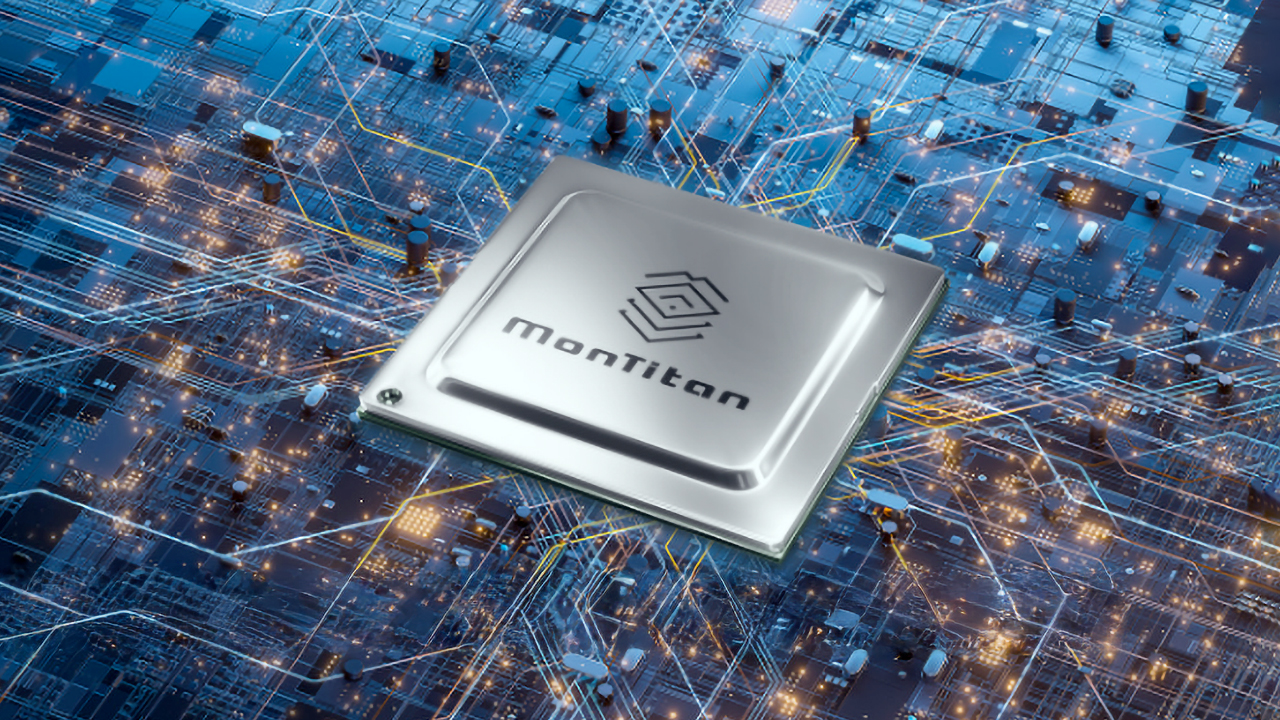Silicon Motion reportedly prepping SM8466 SSD controller with a PCIe 6.0 x4 — leak claims it will be unveiled at FMS 2025, sporting speeds of up to 28GB/s

Silicon Motion plans to formally introduce its MonTitan SM8466 SSD controller with a PCIe 6.0 x4 host interface at the upcoming FMS 2025 conference next month, according to a leak by ITHome. The new controller will enable drives with sequential read speeds of up to 28 GB/s and random read/write throughput of a whopping 7M IOPS.
Silicon Motion's MonTitan SM8466 SSD controller for enterprise SSD will feature 16 NAND channels supporting all the upcoming types of 3D NAND memory, as revealed by Wallace C. Kou, chief executive of Silicon Motion, in an interview with Tom's Hardware published last month. The controller will be used to build drives with up to 512 TB capacity that will feature sequential read speeds of up to 28 GB/s as well as random read/write performance up to 7M 4K IOPS.
Performance of SM8466-based SSDs will by far exceed not only that of the best client SSDs, but also virtually all available enterprise-grade drives.
In terms of capabilities, the SM8466 is expected to be compliant with an NVMe 2.0+ specification, as well as the OCP NVMe SSD Spec 2.5, making it suitable for hyperscale and cloud deployments. It includes SR-IOV/MPF for virtualization, SMART monitoring, and end-to-end data protection. Security features include Secure Boot, AES-256 encryption, TCG Opal compliance, and firmware attestation, a set that offers strong safeguards for sensitive enterprise environments.
As reported, SMI plans to use TSMC's 4nm-class fabrication process to build the SM8466 controller.
The leaked slide from the SMI presentation reveals general specifications of Silicon Motion's MonTitan SM8466, but does not disclose when exactly actual drives powered by the controller will emerge. According to the chief executive of SMI, the company expects its partner to start shipping their SM8466-based products sometime in late 2026 – early 2027, which will coincide with the ramp of next-generation AI servers based on Nvidia's Rubin GPUs for AI and HPC.
In fact, SMI believes that AI will be the main application that will take advantage of PCIe Gen6 drives, as traditional storage applications will not take advantage of such drives until 2026 – 2027. As for client PCs, Kou expects SSDs with a PCIe 6.0 x4 to address PC OEMs only in 2030 or later.
Get Tom's Hardware's best news and in-depth reviews, straight to your inbox.
Follow Tom's Hardware on Google News to get our up-to-date news, analysis, and reviews in your feeds. Make sure to click the Follow button.

Anton Shilov is a contributing writer at Tom’s Hardware. Over the past couple of decades, he has covered everything from CPUs and GPUs to supercomputers and from modern process technologies and latest fab tools to high-tech industry trends.
-
bit_user Reply
Thanks Anton. Just wanted to emphasize these points, in case anyone missed them.The article said:Silicon Motion's MonTitan SM8466 SSD controller for enterprise SSD...
As for client PCs, Kou expects SSDs with a PCIe 6.0 x4 to address PC OEMs only in 2030 or later.
There won't even be PCIe 6.0-capable CPUs or servers until 2026.The article said:the company expects its partner to start shipping their SM8466-based products sometime in late 2026 – early 2027
https://www.tomshardware.com/pc-components/cpus/amds-256-core-epyc-venice-cpu-in-the-labs-now-coming-in-2026
BTW, I was interested to see no mention of CXL support. -
Stomx Enterprise as oppose to consumers has no problems with many 16x PCIe channels. Consumers actually also can afford motherboards with 4-5 16x PCIe slots if they are really needed. I for example add 3 additional M.2 NVMe SSDs via PCIe enclosures on the motherboard. In these enclosures only 4 channels are used, others are empty. Or these not used lanes can be used for other 3 additional M.2 drives using bifurcation. So why restrict enterprise to just 4 channels on the SSD and not use other 12? This way speeds like 28GB/s would be available 5 years ago when PCIe4.0 appeared.Reply
Besides such dumb restrictions to limit themselves just to 4 channels the problem always was in the lag in the development of advanced nodes controllers which were always hot like a solar surface because used obsolete technology.
Resolve these two restrictions and you will be able to think about not 28 but 128 GB per second drives on these PCIe 6.0 motherboards. I suppose the controller developers have the early access to the PCIe6 or even 7 -
bit_user Reply
That stat was actually in reference to NAND channels, not PCIe lanes. In general, the more channels a controller has, the more NAND chips you need to fully-saturate it. I think the current top-end consumer SSDs have only 8 channels. To feed a controller with 16 channels, you would probably need more NAND chips than you could fit on a M.2 drive.Stomx said:Enterprise as oppose to consumers has no problems with many 16x PCIe channels.
https://www.cactus-tech.com/resources/blog/details/solid-state-drive-primer-8-controller-architecture-channels-and-banks/
As mentioned in the headline, the controller has only x4 PCIe lanes. The reason why they use PCIe 6.0 x4 instead of 5.0 x8 or 4.0 x16 is to optimize density, so that you can pack the highest number of SSDs per server. -
Amdlova ssd nvme 3.0 okReply
ssd nvme 4.0 hot but you can place some metal to cooldown
ssd nvme 5.0 You need direct touch heat pipes to get to work
ssd nvme 6.0 You will need tower style heatsink or water cooler to keep at check levels... and don't forget your extra power cable.
Some one need to bring The PC Climate Change. -
Stomx Reply
I have not seen the actual spec and what specific market they are targeting, but first reaction is that using 4 NAND channels would be detrimental for reaching largest bandwidth specifically with these rates. They mention about PCIex4 and I commented about this. As to chips, they can be made with any number of channels. SN850X for example uses 8 NAND channel controller but uses only 2 chips. It is among fastest on the chartsbit_user said:That stat was actually in reference to NAND channels, not PCIe lanes. In general, the more channels a controller has, the more NAND chips you need to fully-saturate it. I think the current top-end consumer SSDs have only 8 channels. To feed a controller with 16 channels, you would probably need more NAND chips than you could fit on a M.2 drive.
https://www.cactus-tech.com/resources/blog/details/solid-state-drive-primer-8-controller-architecture-channels-and-banks/
As mentioned in the headline, the controller has only x4 PCIe lanes. The reason why they use PCIe 6.0 x4 instead of 5.0 x8 or 4.0 x16 is to optimize density, so that you can pack the highest number of SSDs per server. -
bit_user Reply
I'd be surprised if there's any NAND on the market with more than 4 channels per package. The only 16-channel controllers seem to be for datacenter drives and target much higher capacity than you could fit on a M.2 drive.Stomx said:As to chips, they can be made with any number of channels. SN850X for example uses 8 NAND channel controller but uses only 2 chips. It is among fastest on the charts